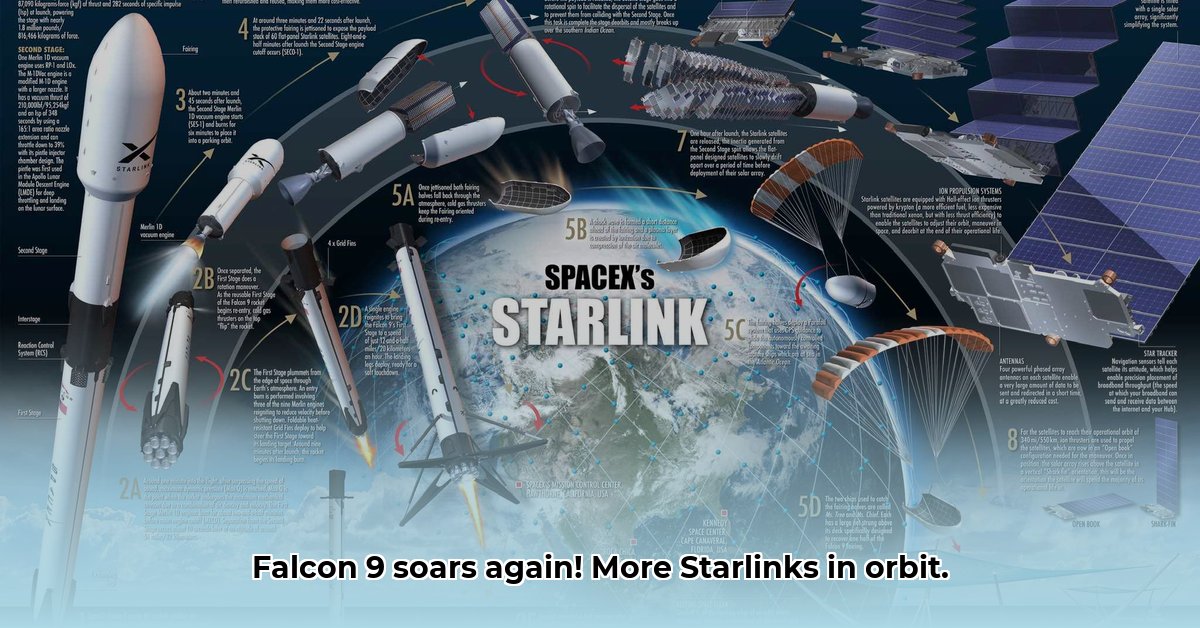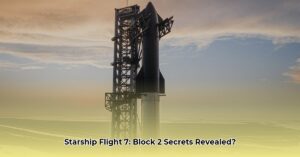Starlink Mission Expands Internet Constellation
SpaceX continues its ambitious Starlink project, launching another batch of satellites aboard a Falcon 9 rocket. This mission adds to the growing network of satellites designed to provide high-speed internet access globally, particularly in underserved areas. This article provides the latest updates on recent launches, the capabilities of the Falcon 9, and the future of Starlink. Learn more about SpaceX’s Starship program. Starship’s development continues alongside Starlink.
Recent Starlink Launches: Mission Summaries
Recent months have seen multiple Starlink missions lift off from both Vandenberg Space Force Base in California and Kennedy Space Center in Florida. Each Falcon 9 typically carries dozens of Starlink satellites into low Earth orbit. The Falcon 9’s signature booster landing, either on a drone ship or back at the launch site, highlights its reusability.
| Launch Date | Launch Site | Satellites Launched | Booster Landing | Notes |
|---|---|---|---|---|
| January 21, 2025 | Kennedy Space Center (LC-39A) | 21 | Successful | Likely carried laser inter-satellite communication technology. Booster B1080 completed its 8th successful flight. |
| January 18, 2025 | Vandenberg Space Force Base | 27 | Successful | Deployed enhanced V2 Mini satellites, marking the 400th successful Falcon booster landing (B1080 – 15th flight). |
(Note: Launch details are based on available information at the time of writing and may be subject to change. Consult official sources for the most up-to-date information.)
Falcon 9: The Reusable Rocket Powering Starlink
The Falcon 9’s reusability is key to Starlink’s rapid expansion. By landing and reusing the first-stage booster, SpaceX significantly reduces launch costs, making frequent missions economically viable. Some boosters have flown over 15 times, demonstrating the reliability and cost-effectiveness of this technology.
Starlink’s Goal: Global Internet Connectivity
Starlink aims to provide high-speed, low-latency internet access worldwide, particularly in areas lacking reliable infrastructure. This has the potential to bridge the digital divide and transform how people connect globally. Researchers are currently studying the potential long-term impacts of large satellite constellations like Starlink on areas such as space debris and astronomical observations.
Tracking Upcoming Starlink Launches
Staying informed about upcoming Starlink launches requires vigilance. SpaceX’s launch schedule can be dynamic, subject to adjustments based on various factors. For the latest information, consult the official SpaceX website, credible space news outlets like Spaceflight Now, Ars Technica, and specialized space news communities. Many launches are also live-streamed, offering real-time viewing opportunities.
Beyond Starlink: SpaceX’s Future Ambitions
While Starlink is a significant focus, SpaceX continues to develop Starship, its next-generation, fully reusable spacecraft. Starship is designed for more ambitious missions, including lunar landings and potential Mars missions. It’s possible Starship may eventually contribute to Starlink deployments, potentially carrying significantly larger payloads.
Starlink Mission Details and Booster Recoveries
This section delves into the details of recent Starlink missions, highlighting the results and information about the Falcon 9 boosters involved.
January 2025 Mission: Pre-Dawn Launch from Kennedy Space Center
On January 21, 2025, a Falcon 9 launched 21 Starlink satellites from Kennedy Space Center’s Pad 39A. Despite initial weather concerns, the mission proceeded smoothly, with the booster (B1080) landing successfully on the droneship A Shortfall of Gravitas. This marked B1080’s 8th flight.
November 2024 Mission: Direct to Cell Technology and Record Turnaround
The November 25, 2024, mission from Cape Canaveral’s Pad 40 deployed 21 Starlink satellites, including 12 equipped with Direct to Cell (DTC) technology. This technology aims to extend internet access to mobile devices in remote areas. The booster, B1080, completed its 13th flight, landing on Just Read the Instructions. This mission set a record for turnaround time between flights (13 days, 12 hours, 44 minutes, and 20 seconds).
These missions showcase the increasing efficiency and reliability of SpaceX’s launch operations and the potential of technologies like DTC to revolutionize global connectivity.
Falcon 9 Rocket: Capabilities and Reusability
The Falcon 9’s capabilities and reusability are central to SpaceX’s success.
Payload Capacity and Launch Locations
A Falcon 9 can typically deploy around 60 Starlink satellites per mission, varying depending on orbital parameters. Launches primarily occur from Cape Canaveral Space Force Station (Florida) and Vandenberg Space Force Base (California), chosen based on mission requirements.
Reusability and Refurbishment
The Falcon 9’s first-stage booster is designed to land and be reused, significantly reducing launch costs. After landing, boosters undergo inspection and refurbishment, enabling multiple flights. Some boosters have flown over 25 times, showcasing the effectiveness of this approach. Research continues into extending booster lifespan further.
| Feature | Description |
|---|---|
| Payload Capacity | Typically around 60 Starlink satellites, but can vary based on mission needs. |
| Launch Sites | Primarily Cape Canaveral and Vandenberg. |
| Reusability | First-stage booster lands and is reused. |
| Refurbishment | Post-flight inspection, repairs, and component replacement allows for multiple reuses. |
| Cost Reduction | Reusability significantly lowers launch costs. |
| Future Implications | Continued advancements in reusability may further reduce costs and increase access to space. |
The Falcon 9’s innovative reusability is transforming the economics of space access, potentially enabling more frequent and ambitious missions in the future. Ongoing research into reusability may lead to even greater cost reductions and expanded space exploration possibilities.







